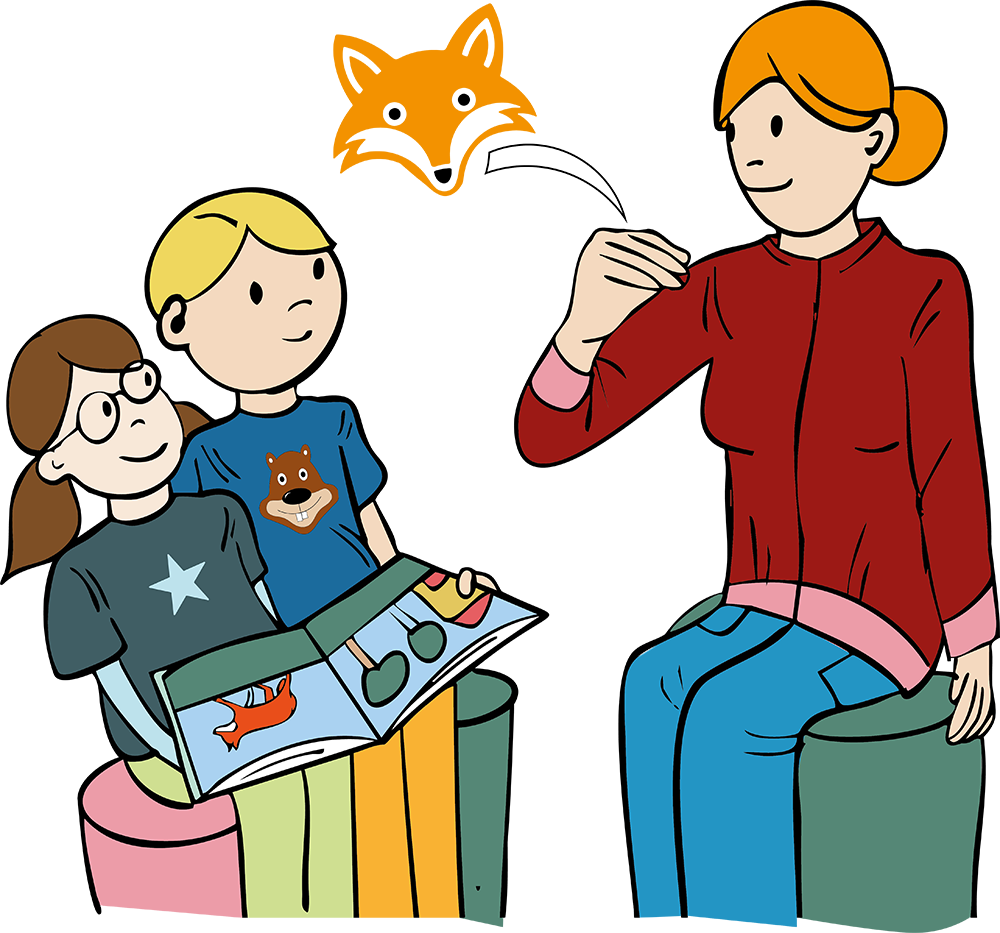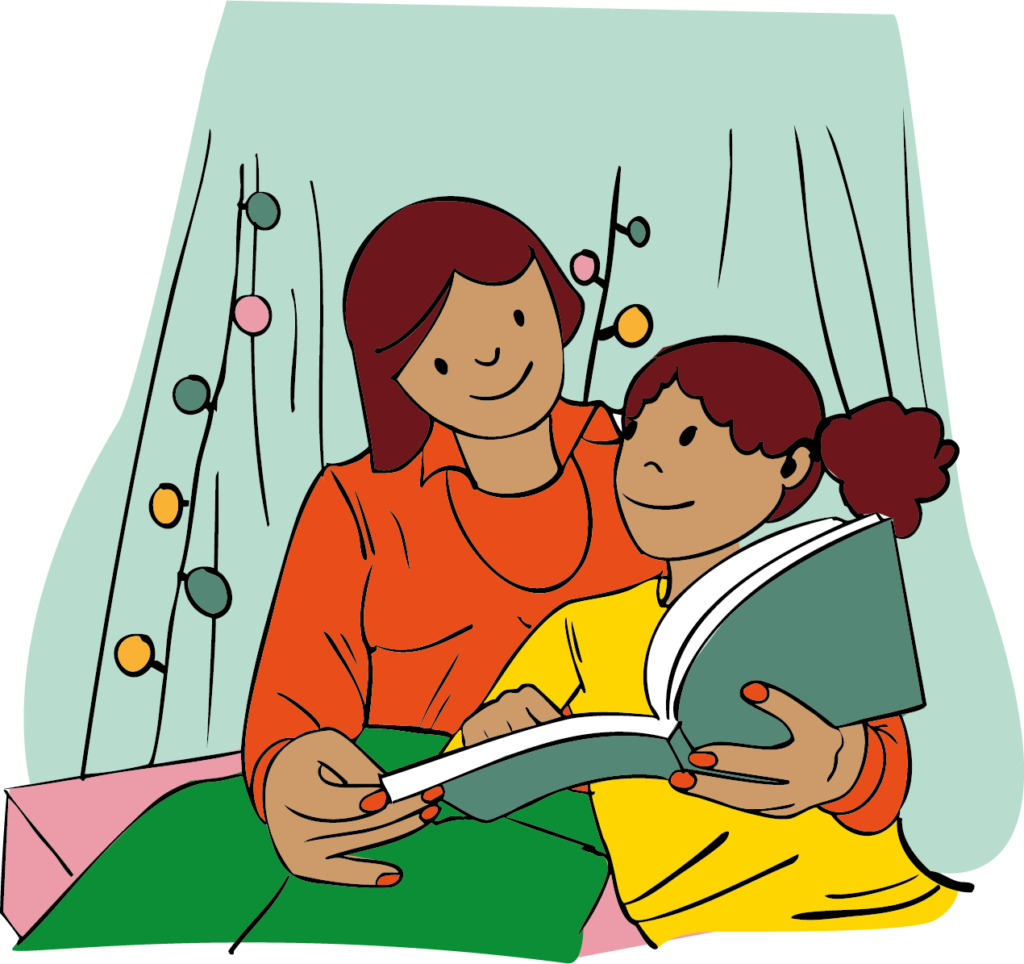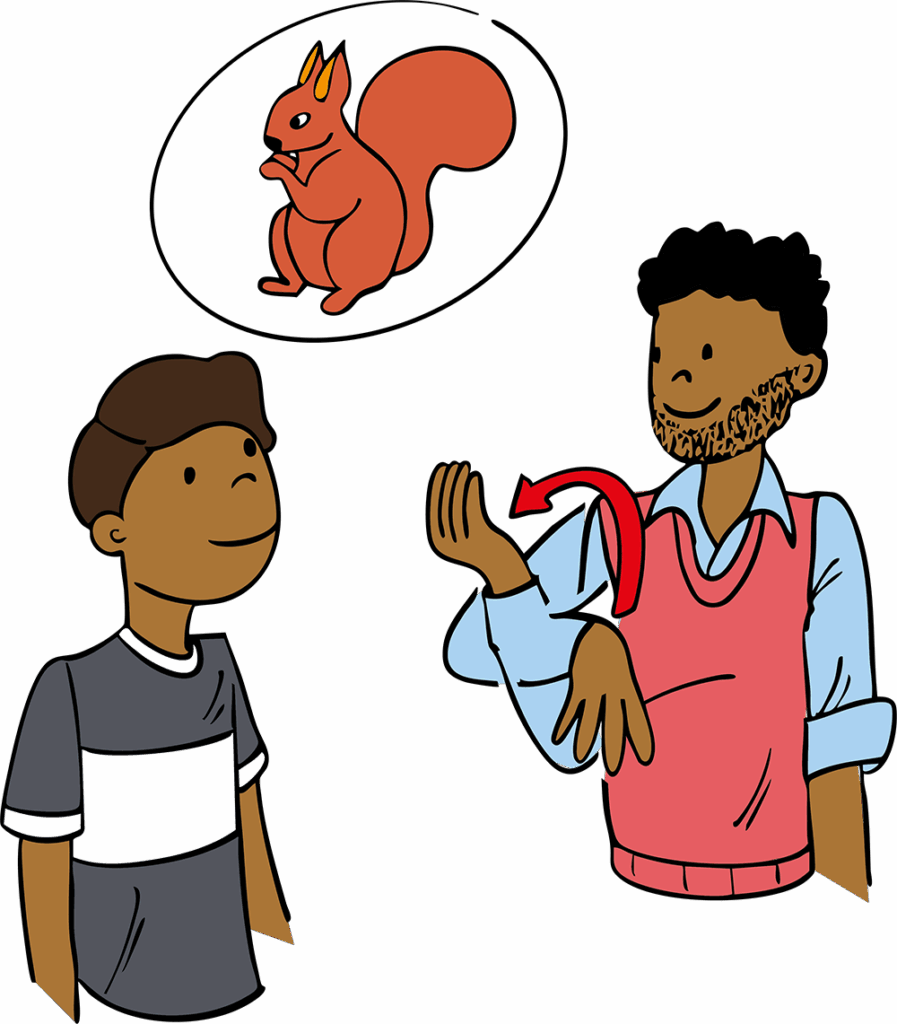Tutorial 01
Thrilling shared book reading
Shared book reading is most fun when your child is attentive, likes the story, understands you well and is allowed to join in.
Here are six ideas on how you can make shared book reading exciting and lively.

Read aloud slowly and clearly
Start the shared book reading slowly and clearly. This will allow your child to follow the story well. You can then gradually do the shared book reading a little faster.
Involve your child
Let your child hold the book and turn the pages. This way, you can respond better to their interests and your child will feel valued.
Establishing routines together can help you to read together in a more relaxed way.

First look, then tell
First look at the pictures on each page. Talk about what you see and what looks interesting. Then you can tell the story.
Your child must be able to look at you when you are signing or talking. If your child points to a picture, pick up on your child’s interest.

For example, explain the name of the animal or what the people in the picture are doing. Your child can also tell the story if they want to. Support them in this.

Make sure your child understands everything
Watch your child – does he or she understand everything? If you have the impression that this is not the case, you can do the following:
Repeat a sentence again using different words or signs.
Add an explanation or leave out part of the text. It is not necessary to always read out everything in a book.

Make the text simpler if necessary:

Shorten long sentences.

Use simpler signs or words.

Leave out difficult passages in the text the first time and tell them more simply yourself.

Take breaks
Short breaks can help so that your child can think about the story and your conversations in peace.

Take breaks

Short breaks can help so that your child can think about the story and your conversations in peace.
Children who use spoken language sometimes need short breaks from listening in order to concentrate better. Children who use sign language also need short breaks for their eyes.
Be expressive
If you feel comfortable doing so, change your voice and/or facial expressions at certain points during shared book reading.

In sign language, you can use your facial expressions and your body as well as a larger sign language space. You can also involve your child: Ask your child, for example: “What is the crocodile doing?”


Exercises
Exercises

Try out three of these strategies the next time you do shared book reading. What experiences have you had with that? Which strategy worked well?

